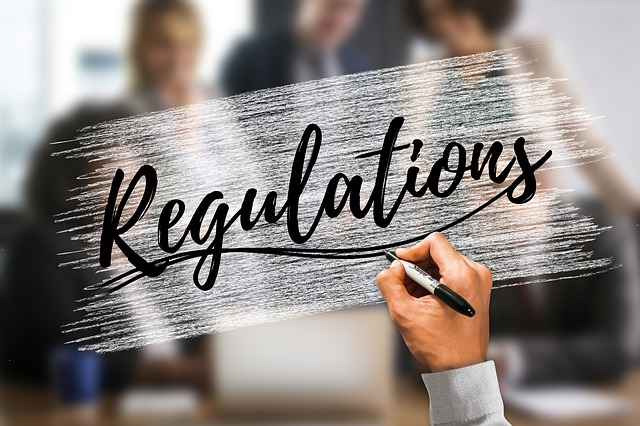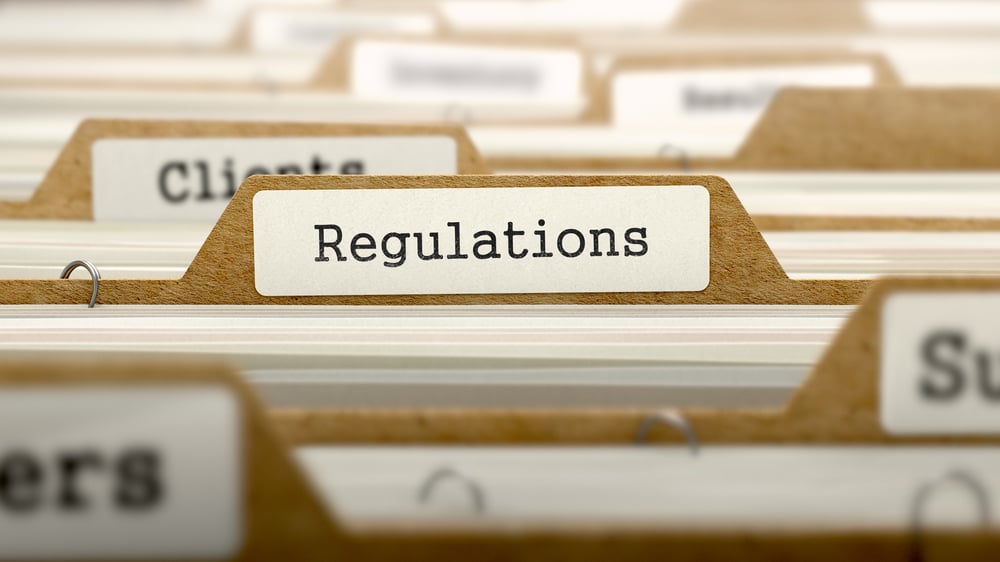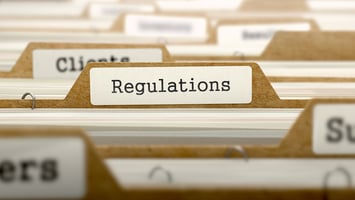What is a regulatory compliance software? Regulatory compliance software tools are used to automate...
Regulatory Compliance Training
What is Regulatory Compliance?
Regulatory compliance refers to the process of adhering to laws, regulations, and other guidelines that have been put in place by government agencies or other regulatory bodies. Organizations that fail to comply with these rules and regulations can face significant penalties, including fines, suspension of operations, and even jail time for individuals involved. Compliance is therefore a critical function within any organization, and employees must be aware of the various compliance risks that their organization faces as well as the policies and procedures in place to mitigate those risks.
What are the Consequences of Non-Compliance?
Organizations that fail to comply with applicable laws and regulations can face a variety of consequences, including:
- Financial penalties: Fines, restitution, and other monetary penalties imposed by courts or regulatory agencies
- Suspension of operations: A temporary halting of all or part of an organization's business activities
- Criminal charges: Jail time and/or fines for individuals who have violated compliance-related laws or regulations
- Damage to reputation: Negative publicity and loss of customer trust and confidence
What are Key Compliance Policies and Procedures?
Key compliance policies and procedures are those that are critical to mitigating compliance risks within an organization. These policies and procedures may be specific to a certain area of the business, such as human resources or finance, or they may apply across the entire organization. Some examples of key compliance policies and procedures include codes of conduct, conflict of interest policies, and whistleblower protections.
Why is it Important to Follow Compliance Policies and Procedures?
It is important to follow compliance policies and procedures in order to help ensure that an organization remains compliant with applicable laws and regulations. These policies and procedures provide a framework for how employees should conduct themselves in the workplace and can help prevent compliance issues from arising. Additionally, following compliance policies and procedures can protect employees from being held personally liable for any non-compliance that may occur.
What are Some Tips for Following Compliance Policies and Procedures?
Some tips for following compliance policies and procedures include:
- Read and understand the organization's compliance policy manual or handbook.
- Ask questions if you have any doubts or concerns about a certain policy or procedure.
- Follow all policies and procedures consistently and never take shortcuts.
- Report any potential compliance issues to a supervisor or the organization's compliance officer.
What Should You Do if You Suspect a Compliance Violation?
If you suspect that a compliance violation has occurred, you should report it to a supervisor or the organization's compliance officer immediately. This will allow the organization to investigate the matter and take appropriate corrective action if necessary. Additionally, failure to report a suspected compliance violation can result in personal liability for the individual involved.

Regulatory compliance management:
Compliance management is the process of identifying, assessing, and controlling compliance risks within an organization. Compliance risks can arise from a variety of sources, including laws and regulations, industry standards, and internal policies and procedures. Organizations must therefore put in place adequate systems and controls to manage these compliance risks effectively.
An effective compliance management system will typically include the following elements:
- A compliance policy that sets out the organization's commitment to compliance with applicable laws and regulations.
- A risk assessment process that identifies and assesses compliance risks on an ongoing basis.
- Procedures for ensuring that employees receive training on compliance-related topics.
- A system for monitoring compliance with applicable laws and regulations.
- Procedures for investigating and addressing compliance violations.
- A mechanism for reporting compliance-related concerns internally.
- An audit program to verify the effectiveness of the compliance management system.
Organizations should periodically review their compliance management systems to ensure that they are adequate and effective in light of changes in the regulatory environment or the organization's business activities. Additionally, organizations should be prepared to respond quickly and appropriately to any compliance issues that may arise.
Regulatory compliance requirements:
- Financial penalties: Fines, restitution, and other monetary penalties imposed by courts or regulatory agencies
- Suspension of operations: A temporary halting of all or part of an organization's business activities
- Criminal charges: Jail time and/or fines for individuals who have violated compliance
-related laws or regulations- Damage to reputation: Negative publicity and loss of customer trust and confidence
Key compliance policies and procedures are those that are critical to mitigating compliance risks within an organization. These policies and procedures may be specific to a certain area of the business, such as human resources or finance, or they may apply across the entire organization. Some examples of key compliance policies and procedures include codes of conduct, conflict of interest policies, and whistleblower protections.
It is important to follow compliance policies and procedures in order to help ensure that an organization remains compliant with applicable laws and regulations. These policies and procedures provide a framework for how employees should conduct themselves in the workplace and can help prevent compliance issues from arising. Additionally, following compliance policies and procedures can protect employees from being held personally liable for any non-compliance that may occur.
Some tips for following compliance policies and procedures include:
- Read and understand the organization's compliance policy manual or handbook.
- Ask questions if you have any doubts or concerns about a certain policy or procedure.
- Follow all policies and procedures consistently and never take shortcuts.
- Report any potential compliance issues to a supervisor or the organization's compliance officer.
If you suspect that a compliance violation has occurred, you should report it to a supervisor or the organization's compliance officer immediately. This will allow the organization to investigate the matter and take appropriate corrective action if necessary. Additionally, failure to report a suspected compliance violation can result in personal liability for the individual involved.

Regulatory compliance and the audit reports proving compliance:
- The compliance report is an internal document that is created by the organization's compliance department.
- The audit report is an external document that is prepared by an independent auditor.
- The compliance report should be made available to the auditor in order to help them understand the organization's compliance program and assess its effectiveness.
- The audit report may be used by regulatory agencies or other third parties to verify the organization's compliance with applicable laws and regulations.
Organizations should have a robust compliance program in place to help ensure compliance with applicable laws and regulations.
A well-designed compliance program will typically include:
- A code of conduct that sets forth the organization's standards of ethical and legal behavior
- Policies and procedures that are designed to prevent and detect compliance violations
- Training and education programs that help ensure employees understand and comply with the organization's compliance policies
- A system for reporting suspected compliance violations
- Internal and external audits of the organization's compliance program
Organizations should also have a process in place for investigating and responding to compliance violations. This process should include:
- An evaluation of the facts and circumstances of the violation
- A determination of whether the violation occurred due to a failure to comply with the organization's policies and procedures
- A determination of whether any disciplinary action is warranted
- The implementation of corrective action to address any underlying issues that led to the compliance violation
Organizations should take steps to prevent compliance violations from occurring in the first place. Some preventive measures that can be taken include:
- Conducting regular training and education programs on the organization's compliance policies and procedures
- Implementing policies and procedures that are designed to detect and prevent potential compliance violations
- Performing regular audits of the organization's compliance program
- Investigating and responding quickly to any potential compliance violations that are detected
Organizations that have robust compliance programs in place are less likely to experience compliance problems. Additionally, these organizations are better equipped to quickly identify and resolve any compliance issues that do arise.
Compliance violations can have serious consequences for both organizations and individuals. Organizations may face financial penalties, damage to reputation, and loss of customer trust and confidence. Individuals who have violated compliance regulations may be subject to criminal charges, including jail time, and/or fines. Additionally, both organizations and individuals may be required to take corrective action in order to come into compliance.
When it comes to compliance, prevention is the best policy. Organizations should have a compliance management system in place that includes policies and procedures designed to prevent compliance violations from occurring. Employees should be trained on the organization's compliance policies and procedures, and should be aware of the potential consequences of violating them. Additionally, organizations should have a process in place for investigating and responding to suspected compliance violations.
The best way to avoid compliance violations is to ensure that all employees are familiar with the organization's compliance policies and procedures. Employees should know where to find these policies, and should be able to understand them. Additionally, employees should be aware of the potential consequences of violating compliance regulations.
Organizations can also reduce the risk of compliance violations by implementing effective controls. Controls are designed to ensure that employees comply with applicable laws and regulations. Examples of controls include background checks, financial audits, and compliance training.
Ultimately, the responsibility for compliance rests with the organization. However, individuals can play a role in ensuring compliance by following all policies and procedures consistently and never taking shortcuts. Additionally, if you have any doubts or concerns about compliance, you should always err on the side of caution and consult with a supervisor or someone in the organization's compliance department.

Glossary of Useful Terms:
Compliance risk: The risk that an organization will face penalties or other adverse consequences as a result of violating compliance regulations
Compliance management system (CMS): A system of policies, procedures, and processes designed to ensure compliance with applicable laws and regulations
Key compliance policies and procedures: Policiess and procedures that are critical to mitigating compliance risks within an organization
Code of conduct: A set of principles that guide employee behavior in the workplace
Conflict of interest policy: A policy designed to prevent employees from engaging in activities that could result in a conflict of interest
Whistleblower protection: A policy or law that provides employees with protections against retaliation if they report suspected wrongdoing within the organization.
Organizational compliance: The state of an organization being in compliance with applicable laws and regulations. Also known as corporate compliance.
Personal liability: Legal responsibility for one's own actions.
Data breaches: The unauthorized disclosure of confidential or sensitive information.
Financial penalties: Monetary fines that may be imposed on an organization as a result of violating compliance regulations.
Reputational damage: Negative publicity or public opinion that an organization may face as a result of violating compliance regulations.
Regulatory compliance laws: Laws that establish compliance requirements for organizations.
Criminal charges: Formal charges that may be filed against an organization or individual as a result of violating compliance regulations.
Periodic compliance audits: Audits that are conducted on a regular basis to ensure that an organization is in compliance with applicable laws and regulations.
Ethics: The principles of right and wrong that guide individuals' behavior.
Integrity: The quality of being honest and having strong moral principles.
Transparency: The quality of being open and honest in communication.
Compliance frameworks: Systems of policies, procedures, and processes that are designed to ensure compliance with applicable laws and regulations.
Compliance training: Training that is designed to help employees understand and comply with applicable laws and regulations.
Cybersecurity compliance: The state of an organization's cybersecurity program being in compliance with applicable laws and regulations.
Cybersecurity risks: The risks associated with the unauthorized disclosure of confidential or sensitive information, or the unauthorized access to systems or data.
Regulatory landscape: The constantly changing landscape of compliance laws and regulations.
Organizational culture: The values, beliefs, and norms that guide an organization's behavior.
Risk management: The process of identifying, assessing, and managing risks to an organization.

Certificate in Regulatory Compliance
(Online Training)
Course Overview:
This regulatory compliance training course is designed to provide employees with an understanding of the various compliance-related risks that their organization faces, as well as the policies and procedures in place to mitigate those risks.
Learning Objectives:
By the end of this course, learners will be able to:
- Understand what compliance risks are and how they can affect their organization
- Identify the key compliance policies and procedures that apply to their job function
- Understand how to follow these policies and procedures in order to help mitigate compliance risks
- Recognize potential compliance issues and know how to report them appropriately
Course Outline:
Module 1: Introduction to Regulatory Compliance
- What is regulatory compliance?
- Why is compliance important?
- What are the consequences of non-compliance?
Module 2: Compliance risks in the workplace
- What are compliance risks?
- How can compliance risks affect the workplace?
- What are some examples of compliance risks?
Module 3: Key Compliance Policies and Procedures
- What are key compliance policies and procedures?
- How do these policies and procedures help mitigate compliance risks?
- What are some examples of key compliance policies and procedures?
Module 4: Following Compliance Policies and Procedures
- Why is it important to follow compliance policies and procedures?
- What are some tips for following compliance policies and procedures?
- What should you do if you have questions about a compliance policy or procedure?
Module 5: Recognizing Potential Compliance Issues
- What are some signs that there may be a compliance issue?
- What should you do if you think there may be a compliance issue?
- Who can you contact for help with compliance issues?



